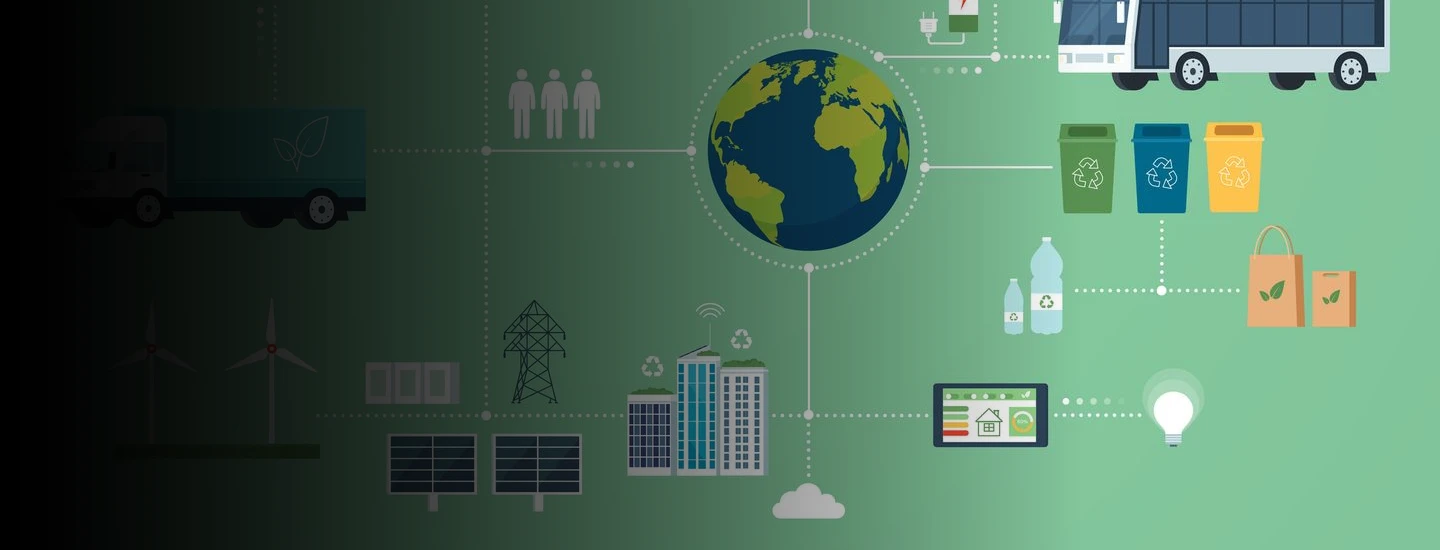Logistics need to change both up and downstream if companies are to make progress on emissions reductions
To adapt to supply-chain disruptions during the pandemic and through ongoing geopolitical conflicts, as in the Red Sea, companies have implemented longer shipping routes, opted for air freight, and often cobbled solutions together without indexing heavily on the environmental impacts of those choices. They won’t be able to in the future. Regulatory shifts like the European Union's Carbon Border Adjustment Mechanism (CBAM) and California's At-Berth Rule are reshaping traditional operations for logistics firms. Consumer preferences are also shifting towards environmentally conscious companies.
CEOs are highly conscious of the need to address sustainability as stewards for their industries. The 2024 AlixPartners Disruption Index found that 49% of CEOs surveyed feel disruptive pressure from outside the company on environmental issues, and 79% feel pressured to take a position on environmental issues.
As a result, companies are putting more focus on reducing carbon footprints across their supply chains with novel solutions and optimization strategies. Understanding and addressing Scope 3 emissions—those calculated from indirect activity up and down the value chain—have thus become crucial for corporate sustainability and effective supply-chain management.
Understanding Scope 3 emissions
Meeting ambitious emissions-reduction goals requires a concerted effort by stakeholders across industries, which is why ESG reporting includes the impact of indirect emissions for a given company, and why solutions often take the form of partnerships.
Scope 3 emissions are the result of activities from assets not owned or directly controlled by the reporting organization but that the organization indirectly impacts in its value chain (Figure 1). These include upstream activities such as the extraction and production of purchased materials and fuels, and downstream activities such as the transportation of products in the distribution network and the end-use of sold products and services.
Figure 1: Scope 1, 2, and 3 emissions across the value chain

For many companies, Scope 3 emissions represent the bulk of their carbon footprint, often exceeding the combined total of Scope 1 (direct emissions from owned or controlled sources) and Scope 2 (indirect emissions from the generation of purchased energy). Solutions dreamed up and executed between stakeholders have put a focus on logistics, as we explore in the examples below.
Offsetting air freight emissions with multimodal transport
DHL has collaborated with Schneider Electric to enhance eco-friendly logistics by integrating sustainable multimodal transport solutions. Recognizing air freight's high carbon footprint, they've adopted sustainable aviation fuels to lessen environmental impact, despite higher costs.
Through strategic shipping optimizations, they are able to maintain competitive pricing and efficiency, achieving close to a 20% reduction in reported carbon emissions in their Singapore and India to North America routes since March 2023.
Integrating domestic trucking and rail
Companies are increasingly adopting intermodal transit, blending truck convenience with rail efficiency, to lower environmental impact. This approach can slash carbon emissions by over 65% for every 1,000 shipment miles.
IKEA, for example, initiated a weekly rail service from Poland to Spain, spanning roughly 2,000 km, potentially eliminating 4,500 truck trips and saving 5,100 tons of CO2 annually. Additionally, IKEA aims to further reduce emissions by employing electric vehicles for last-mile deliveries.
Walmart, the largest retailer in the U.S., is working to avoid 1 billion metric tons of Scope 3 greenhouse gases through Project Gigaton. Of Walmart’s total emissions, almost 90% come from Scope 3, so Walmart has partnered with JB Hunt to significantly increase the usage of intermodal transit and partner on utilizing electric vehicles to transport goods to and from distribution centers and rail yards.
Improving the energy demands of ocean freight
Global food giant Cargill joined with Pyxis Ocean to deploy an old technology in a new format to help reduce fuel consumption. By integrating wind-assisted propulsion technology onto cargo ships, they aim to reduce fuel consumption and carbon emissions by up to 40% on specific routes.
This innovative approach represents a significant stride towards sustainable shipping, aligning with global decarbonization goals and potentially reshaping the industry's environmental footprint.
The role of tools like AlixPartners' Should-CarbonTM
Navigating the complexities of Scope 3 emissions requires a detailed understanding of the supply chain and the lifecycle of products. Solutions like AlixPartners' Should-CarbonTM have been deployed to help supercharge these strategies.
By providing a detailed heatmap of estimated carbon emissions within the supply chain, this solution helps companies identify hotspots and prioritize areas for improvement. The "Design to Sustainable Value" process aids companies in refining their approach by focusing on key materials, processes, and suppliers, and driving the most significant impact on their carbon footprint.
Addressing Scope 3 emissions is a challenging but essential step for companies committed to sustainability. As regulatory and consumer pressures mount, businesses must adopt a holistic approach to carbon reduction, leveraging new technologies and collaborative initiatives to make tangible progress across their supply chain. And they can’t do it alone.
In adopting leading-edge technologies and partnering with forward-thinking companies, they not only contribute to the global fight against climate change but also build resilience and competitiveness in an increasingly eco-conscious market.


